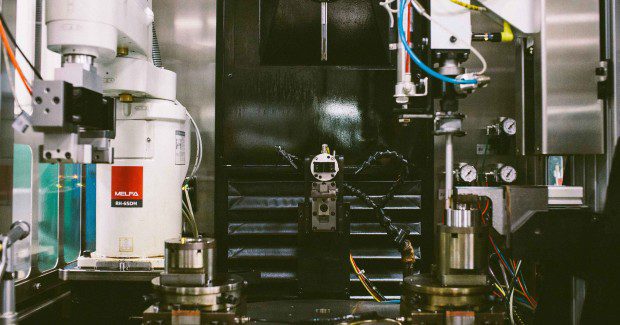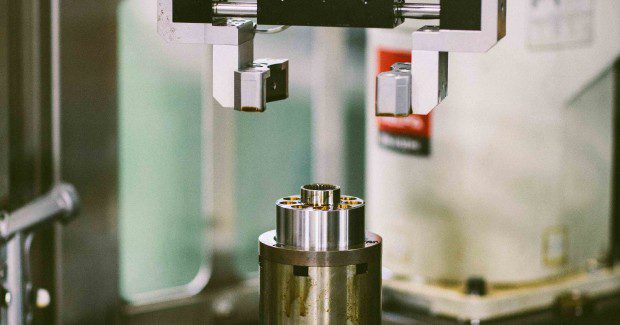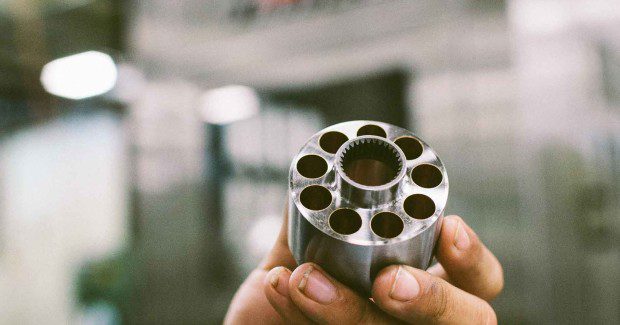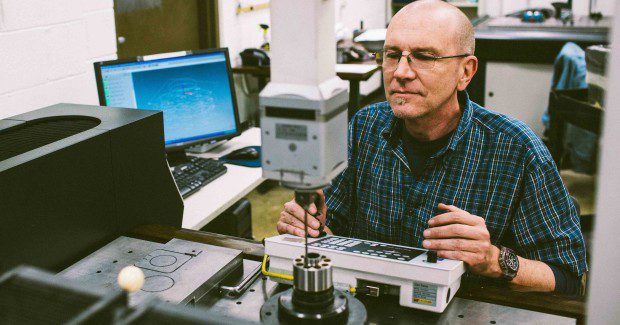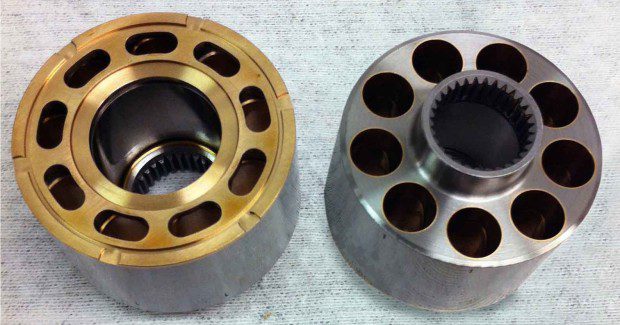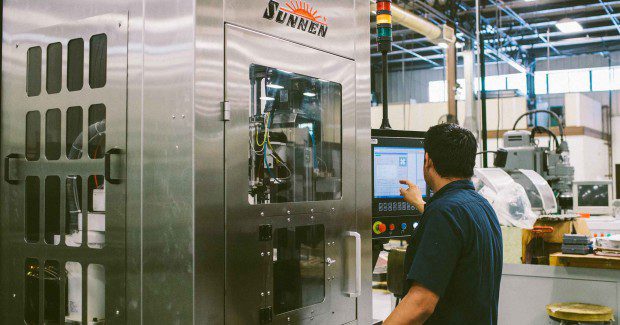Smart Honing Lifts Business for Aerospace Hydraulic Pumps
This second generation machining business is using a new technology that makes a 60 millionths tolerance look generous. No kidding.
Posted: March 5, 2014
Waltz had already been using standard horizontal honing technology from Sunnen, where outcomes are heavily dependent on the operator’s skill. “The operator would hone one bore, clean the part, air gage it at three different levels and then at 90 deg bottom/middle/top to see if there’s any issue, such as taper at the bottom of the bore which would have to be feathered out,” he says. “There is a tremendous amount of back-and-forth to complete nine bores, and if you blow one bore, you’ve scrapped a part valued at several hundred dollars. After honing, we must have confirming CMM inspections on each part, each bore, and this becomes part of the manufacturing history for each block. Honing and inspection could easily take two hours per part.”
The shop’s challenge to Sunnen was to automate everything, including part indexing, air gaging, and recording of gage readings for the part’s history. They achieved all this with the new SV-1015, but it was one of the new patented standard features in this machine – multi-feed honing – that has played a role in taking our honing process capability to a new level.
WHAT IS MULTI-FEED HONING?
The new patented multi-feed honing capability gives users a choice of tool-feed modes to achieve the shortest cycle times, lowest part cost, and longest abrasive life. Multi-feed combines Sunnen’s new controlled-force tool-feed with its existing controlled-rate feed system. The two different modes allow the user to select the better option to suit the workpiece geometry, material and tool type/size.
Typically, a production honing process is set up to use an abrasive tool with a combination of grit size and bond optimized for specific part conditions. Tool expansion to achieve the desired results and final size is programmed based on rate of time. However, when a batch of parts comes in with a different heat treatment, distortion or a size variation, the operator must intervene because the tool may expand too quickly and be damaged.
In the opposite case, with a softer-than-normal or oversize workpiece, the tool will still expand at its programmed rate, when it might have been able to expand faster to reduce cycle time. Expansion at too slow a rate may also result in glazing of the honing stones, which won’t self dress if the cutting force is too low. Typically, the operator tweaks a rate-feed system periodically to compensate for these variables.
By servo-controlling the force in the tool feed system, however, the machine can sense and compensate for these variables. The controlled-force feature, which works in concert with the machine’s standard rate-feed system, functions like cruise control to maintain the optimum cutting load on the honing abrasive throughout a cycle, irrespective of the incoming part’s hardness, geometry or size variation.
“In effect, the machine adapts the tool to what is happening in the bore when the abrasive contacts it,” says Waltz. “This ‘smart tooling’ is an advantage when we are honing rotors with sleeved bores, because the liner sometimes has a little memory and can spring back. The new machine recognizes these variations, adapts, and produces bores with exceptionally consistent size control. It may even shorten or lengthen the normal cycle time as it adapts to part conditions.”
SMARTER HONING
The shop’s new SV-1015 vertical CNC honing machine has a single 5 hp AC spindle with 10 hp servo stroking system and X-Y air bearing table. The operator loads the workpiece in a dedicated fixture that uses the part’s kidney slot as a locating feature. After each bore, the table indexes 90 deg to an Etamic air gaging station where the necessary readings are taken and stored. If the bore passes inspection, the table moves the part to a robot that indexes it for the next bore, duplicating this routine eight times to complete a part. A fixed position master set ring inside the machine’s work envelope ensures correct gage calibration for current environmental conditions.
“On a recent project with an allowable bore tolerance of 0.000240 in (0.006 mm), we easily held a tolerance range of 0.000060 in (0.001524 mm) – that’s 25 percent of the total allowable tolerance, and we tripled the previous production rate, while reducing the labor component by 80 percent so the operator can do other work in the cell,” explains Waltz. “We know from re‑inspecting the parts on our CMMs that the results correlate well. The process capability and data reporting features in the machine have been a great advantage to us and our customers, allowing that data to be downloaded to a spread sheet or SPC software.
“It took us a long time to make the purchase decision on this machine after it was designed, but with our volume and mix of parts, it has proved easy to justify, especially now that we’ve seen customers as excited about it as we are.”
Waltz Brothers Inc., 10 West Waltz Drive, Wheeling, IL 60090, 847-520-1122, Fax: 847-520-1870, [email protected], www.waltzbros.com.
Sunnen Products Company, 7910 Manchester Road, St. Louis, MO 63143, 800-325-3670, Fax: 314-781-2268, [email protected], www.sunnen.com.

